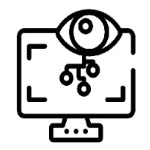Transformers in Computer Vision (English)

200.00 EGP
Transformer Networks are the new trend in Deep Learning nowadays. Transformer models have taken the world of NLP by storm since 2017. Since then, they become the mainstream model in almost ALL NLP tasks. Transformers in CV are still lagging, however they started to take over since 2020. We will start by introducing attention and the transformer networks. Since transformers were first introduced in NLP, they are easier to be described with some NLP example first. From there, we will understand the pros and cons of this architecture. Also, we will discuss the importance of unsupervised or semi supervised pre-training for the transformer architectures, discussing Large Scale Language Models (LLM) in brief, like BERT and GPT. This will pave the way to introduce transformers in CV. Here we will try to extend the attention idea into the 2D spatial domain of the image. We will discuss how convolution can be generalized using self attention, within the encoder-decoder meta architecture. We will see how this generic architecture is almost the same in image as in text and NLP, which makes transformers a generic function approximator. We will discuss the channel and spatial attention, local vs. global attention among other topics. In the next three modules, we will discuss the specific networks that solve the big problems in CV: classification, object detection and segmentation. We will discuss Vision Transformer (ViT) from Google, Shifter Window Transformer (SWIN) from Microsoft, Detection Transformer (DETR) from Facebook research, Segmentation Transformer (SETR) and many others. Then we will discuss the application of Transformers in video processing, through Spatio-Temporal Transformers with application to Moving Object Detection, along with Multi-Task Learning setup. Finally, we will show how those pre-trained arcthiectures can be easily applied in practice using the famous Huggingface library using the Pipeline interface.
Practical Machine Learning course
Practical Computer Vision course (ConvNets)
Introduction to NLP course
Pre-requisities
Overview of Transformer Networks
Transformers in CV
Transformers for image classification
Transformers for object detection
Transformers for semantic segmentation
Huggingface transformers in CV
Conclusion
Topics Covered
What are transformer networks?
State of the Art architectures for CV Apps like Image Classification, Semantic Segmentation, Object Detection and Video Processing
Practical application of SoTA architectures like ViT, DETR, SWIN in Huggingface vision transformers
Attention mechanisms as a general Deep Learning idea
Inductive Bias and the landscape of DL models in terms of modeling assumptions
Transformers application in NLP and Machine Translation
Transformers in Computer Vision
Different types of attention in Computer Vision